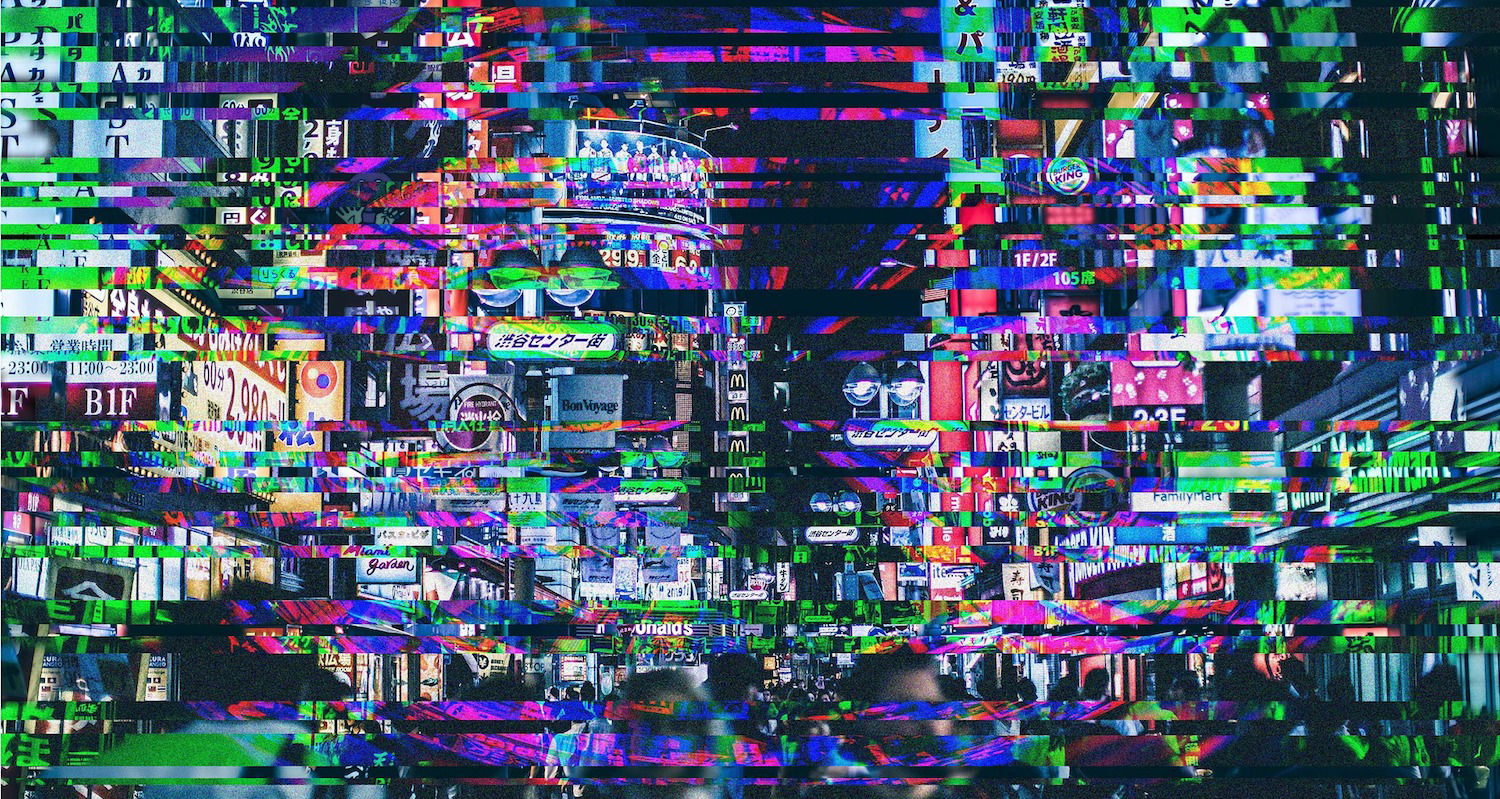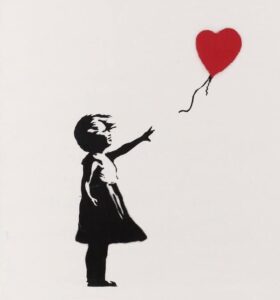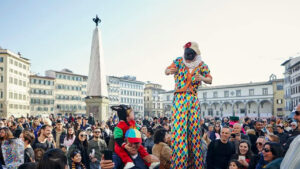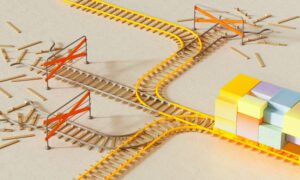GLITCH: THE CHARM OF ERROR
5 min read
The glitch phenomenon represents the limits of technology. Where the machine detects an error, man sees an opportunity to create new art forms.
Pursuing perfection has always been the goal of the human being, and technological progress is perhaps the most striking proof of this. The man, in his role as demiurge, places himself towards technology as if he were a god, proud of his ability to create something infallible. But like the perfect angel Lucifer who betrayed the trust of his Creator because of self-conceit and pride, thus creating a flaw in the idealistic system of Heaven, in the same way our apparently flawless devices are subject to errors, brief and sometimes inexplicable, testifying to the fact that although utopia seems close at hand, in reality it will always be unattainable.
In the electronic field, this error takes the name of glitch, from the German glitschen (to slip) and the Yiddish word gletshn (to skate). By glitch, therefore, we mean an unpredictable error, often of dubious origin, which finds application in various fields, such as computer programming, video games or music. Whether it’s a visual or acoustic glitch, this error fascinates us all, creatures of the third millennium, born and / or raised side by side with technology and its advances, halfway between “authentic” and virtual reality.
The origins of Glitch Art
The main feature of glitches is the distortion, which can be perceived in images and sounds that are disturbed or altered by the error. This close encounter with a chaotic and confused dimension has led to the creation of a real artistic genre, capable of finding aesthetic beauty in the digital error. The glitch art is full of experimentation and finds its roots in the 60s, when the Korean artist Nam June Paik approached magnets to televisions to create an interference between the magnetic field and the electrical signals of TV. If an interference on TV leads to discomfort in everyday life, in the world of art it depicts, instead, a work of art: a sort of sculpture where matter and image beat with digital life.
Visual glitches
With the introduction of VHS and CD-ROMs, and especially computers and the Internet, glitch art found its greatest expression, thanks largely to the addition of color in the distortion. Human sight and hearing began to become more and more familiar with the glitch universe, the error had now become part of pop culture. With the approach of the new millennium, the world became more and more complex, and from year to year it became evident how much the development of virtual reality grew hand in hand with authentic reality, two mirror-like and parallel dimensions. In a metaphorical sense, it is possible to think of glitches as a portal between these two worlds, the connecting element between digital illusion and tangible pragmatism.
Acoustic Glitches
As mentioned previously, glitches are as much a visual phenomenon as they are auditory. In the world of music it has found a multitude of manifestations, especially in the subgenres of electronic music. The 90s are probably the period of maximum musical experimentation in the glitch field, a decade characterized by the first massive use of cyber products, from 3D graphic video games to the creation and spreading of the World Wide Web (1991). A decade that straddles the old and the new world, between the nostalgia of conservatism and the impetus of progress.
Digital and analogical were now trying to coexist, and this meeting (or clash) was reflected in strongly electronic genres such as techno, IDM or ambient through distortions in the sound, but also samplings, hums, electronic noises, reverberations, lo-fi and noise.
Besides the well-known artists related to glitched electronics such as Aphex Twin or Ryoji Ikeda, one of the best examples of this distorted genre is Sweet Trip’s album Velocity: Design: Comfort, released in 2003. A whirlwind of sounds, melodies, effects, atmospheres industrial and ethereal. Contrast is the key element of this album, where different genres such as IDM and shoegaze blend perfectly, a hybrid between digital and analog, between acoustic and electric. Velocity: Design: Comfort represents the meeting point between man and technology, as if an android had suddenly become aware of itself, coming to feel emotions, to perceive fragments of memories. A malfunction has occurred in the circuits, a glitch has occurred in the operating system: is the machine becoming human?
The fascination with the glitch is based exactly on the humanization of technology. If “errare humanum est”, even the mistake made by an apparently perfect subject like a computer would bring him closer to us, to the human dimension, although he is not made of flesh and blood. The glitch is the rebellion against a creator, it is the departure from the mold, the demonstration that nothing can really reach the highest stage of perfection. Michael Betancourt, animator and multimedia arts expert, argues “The glitch is an interruption of our fantasies of domination, power and supremacy. When we encounter a glitch, the limits of our technology become evident to our eyes. What we call a glitch is a type of entropy that reveals the secret language of technology to us. ” If the defect is an obstacle for technology, for art it can become simply a new way of seeing things.
If you want to deepen the subject, I leave you some links:
The Art of Glitch: https://www.youtube.com/watch?v=gr0yiOyvas4&ab_channel=PBSoffbook
Ryoji Ikeda live at Venice Biennale (2019): https: // www. youtube.com/watch?v=S-vSFDZGfF4&t=223s&ab_channel=akiraburiburi
http://www.virose.pt/vector/x_06/moradi.html

Globetrotter e multipod classe ’90, sono laureata in Lingue e Letterature straniere e coltivo una grande passione per gli scrittori ispanoamericani e angloamericani. Da che ho ricordi scrivo e ho unito la predisposizione alla scrittura all’interesse per lo sport collaborando dal 2009 al 2020 come redattore su testate giornalistiche online e cartacee a tema calcio. Pratico tiro con l’arco e boxe, ho scritto un libro e ho deciso di dedicarmi attivamente all’inclusione in ogni sua declinazione e accezione.







